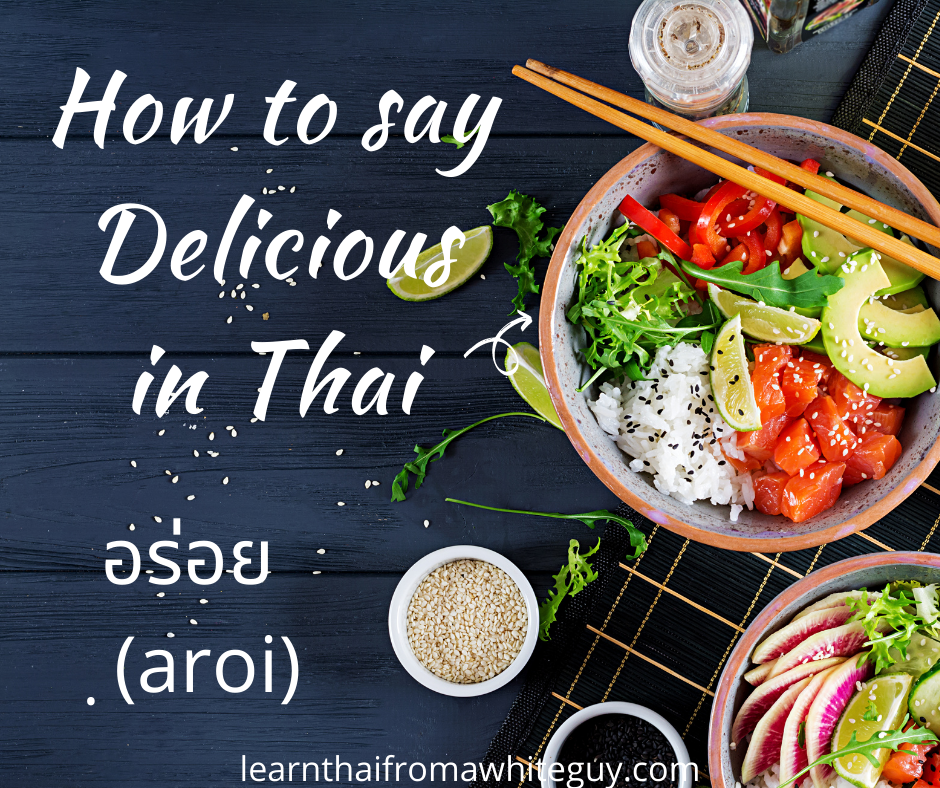Today we’re going to learn how to say “I miss you” in Thai. While this is the perfect phrase to show that special someone that you’re thinking of them, it’s also used to say that you miss your family, friends, places and times of your life.

คิดถึงจัง
I Miss You in Thai
The main Thai phrase for “I miss you” is คิดถึง (kít tĕung).
The phrase คิดถึง (kít tĕung) literally translates as something like “thinking of you” or “(my) thoughts reach (you)” however it’s used just like we use “I miss you” in English.
Thai Grammar Note:
Thai is a very contextual language which means we will very often drop any information that is already understood by both speaker and listener. The most common example of this is dropping the pronouns as in “I miss you.” We really only need to say the “miss” part. If I say คิดถึง (kít tĕung) to you, everybody involved or in earshot knows who misses who.
How to Say I REALLY Miss You in Thai
You can use any of these phrases to when you want to tell someone you miss them a lot.
- คิดถึงมาก (kít tĕung maak) – (I) really miss (you)
- คิดถึงจังเลย (kít tĕung jang loei) – I sure miss you
In case you really want to impress your significant other, use this one. Be warned that the person you use this on may very well swoon.
- คิดถึงใจจะขาด (kít tĕung ja kaat) – I miss you so much, my heart is going to break.
I Miss You NA นะ (NA: The Special Softener Particle)
Thai language has a lot of very short words called “particles.” Particle words often don’t have a a meaning like most words. Rather they add a bit of emotional color to the sentence that they are modifying. In non-tonal languages, we do this with intonation. NA นะ is one of the most common particle words that you will encounter in Thai.
I call it “the softener” because it makes whatever you are saying sound softer/nicer/more pleasant. The extent of this “softness” is contextual. So if people in a relationship say it to each other, or someone says it to a small child, it can have a cute feeling to it.
คิดถึง vs คิดถึงนะ – Both of these phrases mean “I miss you,” but the na adds a pinch of niceness.
More Formal/Polite Ways to Say I Miss You in Thai
The main word for you in Thai is คุณ (khun), but it is not used in Thai like we us “you” in English. The Thai คุณ (khun) has a very formal feel to it which is similar to “mr.” or “mrs.” so we don’t recommend using it very much. However, you will come across it in texts and in Thai dramas where the dialogue tends to be unrealistically polite so we’ll give you some examples.
It would sound nice on a card, but it would sound a little silly if you said to someone. Because, generally, if you are close to someone, you would never call them คุณ (khun) – “you.”
- ฉันคิดถึงคุณ (chăn kít tĕung kun) (female speaker) I miss you.
- ผมคิดถึงคุณ (pŏm kít tĕung kun) (male speaker) I miss you.
More Useful Thai Phrases Related to “I Miss You”
-
คิดถึงบ้าน (kít tĕung bâan) – I miss my home
- *Literally: (I) miss home. The concept of “home” in Thai is more tied to birthplace than residence and in the case of someone saying คิดถึงบ้าน (kít tĕung bâan), they are likely referring to their family more so than their actual home.
- คิดถึงลูก (kít tĕung lûuk) I miss my children/child.
- คิดถึงสมัยก่อน (kít tĕung sà mǎi gɔ̀ɔn) – I miss the old days.
- คิดถึงเมื่อก่อน (kít tĕung mʉ̂a gɔ̀ɔn) I miss the times paste.
- คิดถึงอาหารไทย (kít tĕung aah-hǎan thai) I miss Thai food.
- คิดถึงแฟน (kít tĕung faen) I miss my boyfriend/girlfriend/partner.
Learn to Speak and Read Thai
Want to learn how to speak and read Thai language? My full Thai core skills program teaches you everything you need to know about the script, sounds and tones of Thai. It also contains courses that teach you all the foundational sentence patterns that you’ll need to function in a conversation. Sign up below and I’ll send you some free lessons from the program to try out.






